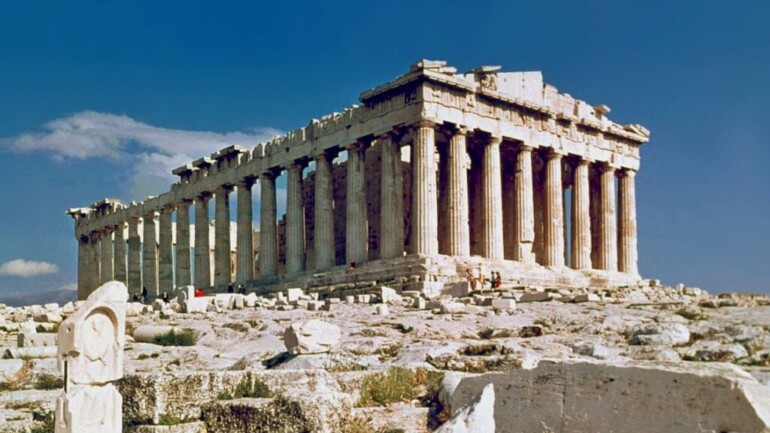Marble has long been appreciated for its ability to convey creative visions and has also served as a historical example of human creativity and skills. Marble’s special properties have made it a favourite material for producing detailed and everlasting sculptures, from ancient civilazation to modern-day artists. This blog surveys the long history and cultural relevance of marble in sculpture and art, highlighting how we carry on the tradition by offering our clients top-notch marble worldwide.
Marble in Art, Inaugural Years
Marble’s strength, flexibility and aesthetic appeal in ancient cultures was valued the most for sculpting and art. In ancient Greece, marble gained a reputation for being used to create massive sculptures and architectural wonders.. The Greeks achieved greatness in the skill of marble carving, creating works of art like the Venus de Milo statue and the Parthenon Marbles. These pieces demonstrated marble’s ability to depict the human form with accurate and graceful lifelikeness in addition to its natural beauty.
Carrying on the Greek legacy, in ancient Rome marble was widely used in both public and private artworks. Marble was used in sculptures, building and decorative features since Roman were skilled at quarries and transportation. Well known art pieces like the relief on the Ara Pacis and the sculptures of Augustus demonstrate the skill of Roman’s at carving marble, emphasizing the value of marble carving in honouring the empire and commemorating historical occasions.
Renaissance Rebirth
The use of marble in art and sculpture saw a notable resurgence during the Renaissance. Marble carving was taken to new heights by artists like Michelangelo, Donatello, and Bernini, who produced pieces that are still highly regarded today. The epitome of Renaissance art, Michelangelo’s David, which he carved from a single block of Carrara marble, embodies the principles of humanism, beauty, and strength.
Renaissance artists found that marble was the ideal medium for exploring issues of anatomy, movement, and emotion because of its ability to depict delicate expressions and tiny details. The translucency and organic veining of the material gave the sculptures a realistic appearance that never fails to astound.

Cultural Importance on Different Continents
Europe has a long history in marble sculptures; also other cultures have used marble as a medium for artistic expression. Marble has a unique role in Indian art and architecture. Taj Mahal, one of the most famous buildings in the world, is an evidence of elegance and adaptability of Indian marble. This exquisite tomb showcases showcases the artistry and skill of its designers with it delicate carvings and detailed inlay work.
Marble is a classic garden and temple material used in China; as it represent longevity and purity. China highly values marble as it is used in elaborative sculptures and decorative items that honour the nation’s rich culture.
Modern Marble Art
To build long lasting pieces, marble is still preferred for sculptors in modern art. Marble is a mean used by modern artists to explore, pushing the limits of conventional methods and investigating novel forms and ideas. From hyper-realistic figurines to abstract sculptures, a large number of artistic understandings are possible due to the marble’s ageless appeal and versatility.
One of the primary suppliers of premium marble, Shri Parasnath Exports, is essential for the work of modern architects and artists. By offering a wide range of marble that are supplied from reputable quarries, we guarantee that our clients have complete access to the best materials for their design, to bring into existence.
Marble in Architecture
Marble has been widely used in architecture for both useful and decorative reasons, even beyond independent statues. Marble is a potential choice for architects designing because of its beauty and toughness, including luxurious place to worship and palaces to cutting edge structures. Due to marbles resistance to weather and preservation of beauty marble ensures that structures last for a long time.
The Art of Marble Restoration
Maintaining cultural heritage requires preserving marble art and architecture. Marble is prone to weathering, pollution and human impact overtime. Restoration operations demand extreme care to details and specialized knowledge to guarantee marble’s original integrity and beauty is maintained.
Premium Materials for Modern Sculpture and Artistic Projects
Artists and architects today explore many types of stone beyond Carrara and Makrana when creating modern sculptures or installations. Rare materials like white onyx marble are popular for art pieces and feature walls because of their natural translucency and dramatic veining. In contemporary architecture, designers also explore durable stones sourced from a trusted quartzite stone supplier to get both strength and striking colour movement in large sculptural elements.
At SPN Marble, many creative projects are processed at our marble factory in Silvassa, where cutting, polishing and finishing are completed under expert supervision. Materials like silver travertine marble are used for artistic flooring, museum interiors and statement panels because of their soft patterns and unique textures. With access to premium stones from verified quarries, sculptors and designers can choose slabs that match their artistic concept while maintaining long–term durability.


